Key Takeaways
- Learn how to prepare, present, and communicate effectively in remote interviews to impress potential employers.
- Discover best practices for setting up a professional virtual interview environment and avoiding common mistakes.
- Gain actionable tips for following up, dressing for success, and showcasing remote readiness to get hired in the digital age.
The global workforce has undergone a remarkable transformation over the past decade, with one of the most significant shifts being the rise of remote work and virtual hiring processes.
As technology continues to revolutionize how businesses operate, job seekers must adapt to a rapidly evolving employment landscape where virtual interviews have become the new norm rather than the exception.
Whether you’re applying for a remote-first position, a hybrid role, or simply participating in an initial screening interview, mastering virtual interviews is now a crucial skill in your professional toolkit.

Virtual interviews offer numerous advantages for both employers and candidates.
Companies benefit from reduced recruitment costs, access to a broader talent pool, and the ability to conduct interviews efficiently across time zones.
For job seekers, virtual interviews eliminate geographical constraints, provide more scheduling flexibility, and allow them to engage with potential employers from the comfort of their own space.
However, these advantages come with unique challenges—challenges that can impact your chances of success if not approached strategically.
In today’s digital-first job market, excelling in a virtual interview requires more than just having a stable internet connection and a quiet room.
Candidates must be able to communicate their value clearly through a screen, build rapport with hiring managers in a remote setting, and present themselves professionally while navigating technical tools like Zoom, Microsoft Teams, or Google Meet.
Factors such as camera placement, lighting, body language, and tone of voice play a critical role in how your message is perceived during a virtual interaction.
Unlike traditional face-to-face interviews, where non-verbal cues and physical presence can make a strong impression, virtual interviews require an intentional focus on digital etiquette and visual communication.
Moreover, remote hiring processes often involve multiple stages of digital assessments, asynchronous video interviews, and panel discussions conducted entirely online.
This means job seekers need to be well-prepared at every level—from researching the company and anticipating questions to managing virtual meeting platforms and responding confidently despite potential technical glitches. Standing out in a virtual interview environment demands a combination of preparation, adaptability, and technological fluency.
This comprehensive guide on “Virtual Interview Mastery: How to Get Hired Remotely in the Digital Age” aims to equip job seekers with the practical insights, proven strategies, and essential tips needed to thrive in online interview settings. Whether you’re a seasoned professional transitioning into remote work or a recent graduate entering a competitive digital job market, this guide will help you navigate the virtual hiring landscape with confidence.
From understanding the mechanics of remote interviews to optimizing your virtual presence, avoiding common pitfalls, and following up with professionalism, each section of this article is designed to empower you with the knowledge and skills to impress recruiters and land your next remote opportunity. In a world where first impressions are increasingly made through screens, mastering the art of virtual interviewing is not just a bonus—it’s a necessity.
Before we venture further into this article, we would like to share who we are and what we do.
About 9cv9
9cv9 is a business tech startup based in Singapore and Asia, with a strong presence all over the world.
With over nine years of startup and business experience, and being highly involved in connecting with thousands of companies and startups, the 9cv9 team has listed some important learning points in this overview of Virtual Interviews.
If your company needs recruitment and headhunting services to hire top-quality employees, you can use 9cv9 headhunting and recruitment services to hire top talents and candidates. Find out more here, or send over an email to [email protected].
Or just post 1 free job posting here at 9cv9 Hiring Portal in under 10 minutes.
Virtual Interview Mastery: How to Get Hired Remotely in the Digital Age
- Understanding the Rise of Virtual Interviews
- Preparing for a Virtual Interview Like a Pro
- Setting Up Your Virtual Interview Environment
- Mastering Body Language and Communication Online
- Dressing for Success in a Remote Interview
- Handling Technical Issues with Confidence
- Following Up After the Virtual Interview
- Common Mistakes to Avoid in Virtual Interviews
- Final Tips for Getting Hired Remotely
1. Understanding the Rise of Virtual Interviews
As the global job market continues to evolve, virtual interviews have emerged as a cornerstone of modern recruitment. Driven by rapid digital transformation, remote work trends, and the need for flexible hiring processes, virtual interviews are now standard across industries. This section explores the key reasons behind the rise of virtual interviews, their growing adoption, and their long-term impact on hiring strategies.
The Evolution of Hiring Practices
Shift from Traditional to Digital Interviews
- Traditional face-to-face interviews have long been the norm, but the pandemic accelerated the shift to digital formats.
- Virtual interviews offer time and cost savings for both employers and candidates.
- Companies now rely on platforms like Zoom, Microsoft Teams, and Google Meet for remote hiring.
Example:
Before 2020, many companies like IBM and Deloitte only used virtual interviews for international candidates. By 2023, they adopted them across nearly all roles, from interns to executives.
Technological Advancements Enabling the Shift
- High-speed internet and cloud-based video conferencing tools have made remote interviewing seamless.
- Widespread access to smartphones, laptops, and webcams has democratized participation.
Key Tools Empowering Virtual Interviews:
| Tool | Function | Popular Platforms |
|---|---|---|
| Video Conferencing | Conduct real-time interviews | Zoom, Microsoft Teams, Skype |
| Scheduling Software | Automate interview scheduling | Calendly, Google Calendar |
| ATS Integration | Track and assess candidates | Greenhouse, Lever, BambooHR |
| AI Tools | Pre-screening & assessments | HireVue, Pymetrics, Vervoe |
Major Drivers Behind the Rise
Remote Work Culture and Globalization
- The global shift to remote and hybrid work has encouraged location-agnostic hiring.
- Employers can now source talent beyond their geographic regions, reducing overheads and widening the talent pool.
Example:
A tech startup in Singapore can now interview and hire developers from Vietnam or Eastern Europe without requiring relocation.
Cost Efficiency for Employers
- Companies save on office space, travel reimbursements, and logistical arrangements.
- Virtual interviews streamline bulk hiring, especially for seasonal or contract roles.
Comparison Table: In-Person vs Virtual Interviews (Estimated Costs)
| Cost Component | In-Person Interview | Virtual Interview |
|---|---|---|
| Candidate Travel Reimbursement | $200+ | $0 |
| Interview Room Setup | $100 | $0 |
| Time Off for Employees | 2–3 hours | 1 hour |
| Scheduling Time | 1–2 days | A few minutes |
Increased Scheduling Flexibility
- Virtual interviews reduce the need to coordinate physical meetings.
- Employers and candidates can align across time zones with greater ease.
Focus on Digital Communication Skills
- Virtual interviews help assess how well a candidate communicates digitally.
- Companies prioritize digital collaboration, especially for fully remote roles.
Example:
Customer service teams at companies like Shopify or Amazon now evaluate applicants’ camera presence and chat etiquette during interviews.
Adoption Across Industries
High Adoption in Tech and Digital Fields
- IT, SaaS, and eCommerce companies were early adopters due to digital infrastructure.
- Hiring for roles like software developers, UX designers, and digital marketers is often 100% virtual.
Gradual Uptake in Traditional Sectors
- Healthcare, education, and finance sectors initially resisted but have now embraced virtual hiring for many positions.
- Even legal and consulting firms conduct first-round interviews virtually before moving to in-person assessments.
Chart: Virtual Interview Adoption by Industry (2020–2024 Trend)
% of Companies Using Virtual Interviews
Tech & IT: ██████████████████████ 95%
Finance: ████████████████ 80%
Healthcare: ██████████████ 75%
Education: ████████████ 65%
Retail: ███████████ 60%
Manufacturing: █████████ 50%
Legal: ████████ 45%
(Source: Gartner, 2024)
Benefits of Virtual Interviews for Candidates
Greater Accessibility
- Candidates can attend interviews from any location, including rural or underserved areas.
- This levels the playing field for candidates with mobility challenges or caregiving responsibilities.
Faster Hiring Processes
- Reduced travel and coordination lead to faster turnaround times.
- Candidates often receive feedback or second-round calls within 24–48 hours.
Improved Interview Readiness
- Interviewees can better prepare in their own space, use notes discreetly, and manage their environment.
- Helps reduce interview anxiety for many professionals.
Example:
A graduate in Malaysia can now interview with a Berlin-based firm without needing a visa or travel budget, increasing access to international roles.
Long-Term Impact of Virtual Interviews
Redefining Employer Branding
- Employers are now judged by how smooth and respectful their virtual interview process is.
- A poor online interview experience can affect company reputation and candidate attraction.
Permanent Place in Recruitment Strategy
- While some final-round interviews may return in-person, virtual interviews will continue for early screening and panel assessments.
- Hybrid hiring models are now the new normal.
Future Forecast Chart: Role of Virtual Interviews in Hiring (2024–2028)
| Year | Screening Interviews | Final Interviews | Overall Adoption |
|---|---|---|---|
| 2024 | 90% | 60% | 85% |
| 2025 | 92% | 65% | 88% |
| 2026 | 93% | 70% | 90% |
| 2027 | 94% | 72% | 91% |
| 2028 | 95% | 75% | 93% |
Final Thoughts
- Virtual interviews are not a temporary trend—they’re a permanent, evolving fixture in global hiring.
- Organizations and job seekers alike must adapt to the norms of digital-first recruitment.
- Embracing tools, preparation, and professionalism in virtual settings is essential for long-term success in the digital job market.
2. Preparing for a Virtual Interview Like a Pro
Successfully preparing for a virtual interview involves more than just clicking a meeting link and showing up. It requires deliberate planning, focused research, and practice tailored to a digital setting. The following in-depth strategies and tools will guide candidates to prepare like a professional and leave a lasting impression.
Understanding the Role and Company
• Research the Company Thoroughly
- Visit the company’s official website, particularly the About Us, Mission, and Careers pages.
- Study recent news articles, press releases, and LinkedIn updates to learn about major initiatives or achievements.
- Identify company values, leadership style, and organizational culture.
• Analyze the Job Description
- Highlight key responsibilities, required skills, and qualifications.
- Understand which parts of the job align with your experience and prepare to showcase those.
- Use a table to map requirements against your strengths.
| Job Requirement | Your Experience/Skills | Talking Points for Interview |
|---|---|---|
| 3+ years in digital marketing | 4 years at XYZ Agency | SEO, SEM, analytics, email campaigns |
| Experience with Google Analytics | Google Analytics Certified | Improved CTR by 40% using GA insights |
| Strong communication skills | Led client presentations and team training | Can articulate marketing plans clearly on Zoom |
Practice Common and Role-Specific Questions
• General Interview Questions to Practice
- “Tell me about yourself.”
- “Why do you want to work here?”
- “What are your strengths and weaknesses?”
- “Describe a challenge you overcame remotely.”
• Role-Specific Examples
- For software engineers:
- “Walk us through a recent project. What technologies did you use?”
- “How do you manage version control when working remotely?”
- For marketing roles:
- “Describe a digital campaign you ran and how you measured success.”
- “What marketing tools do you use for remote collaboration?”
• STAR Method Practice
- Use the Situation – Task – Action – Result format to answer behavioral questions.
- Prepare 3–5 real-life stories using STAR structure.
| Behavioral Question | STAR Example Brief |
|---|---|
| “Tell me about a time you solved a problem” | S: Campaign lagged in leads. T: Fix performance. A: A/B testing. R: 60% increase in CTR |
| “Describe a conflict in a team” | S: Miscommunication in remote team. T: Align goals. A: Weekly syncs. R: Improved trust |
Prepare and Test Your Tech Tools
• Test Hardware and Software
- Ensure your laptop camera, microphone, and headphones are functioning properly.
- Use tools like Zoom Test Meeting, Google Meet demo, or Skype test call.
- Close unnecessary applications to preserve bandwidth.
• Create a Backup Plan
- Keep a secondary device (tablet or smartphone) nearby as a backup.
- Ensure your interview link works in advance.
- Prepare the interviewer’s email or phone number in case of disconnection.
| Tool | Purpose | Backup Alternative |
|---|---|---|
| Zoom | Video Interview Platform | Google Meet, Skype |
| Google Docs | Note-taking and sharing resumes | Microsoft Word, PDF resume |
| Speedtest.net | Test internet bandwidth | Use mobile hotspot if Wi-Fi fails |
Rehearse with a Mock Interview
• Practice with a Friend or Mentor
- Simulate a full-length virtual interview over video call.
- Request feedback on eye contact, pace of speaking, background, and tone.
• Use Online Tools for Self-Evaluation
- Record yourself answering sample questions.
- Review your body language, speech clarity, and visual presence.
- Tools like Interviewing.io, Big Interview, and Voomer can provide AI-based feedback.
• Evaluate Non-Verbal Cues
- Observe your posture and gestures.
- Maintain consistent facial expressions and camera alignment.
- Avoid excessive fidgeting or looking off-screen.
Prepare Questions to Ask the Interviewer
• Show Engagement and Curiosity
- “How does the team stay connected in a remote environment?”
- “What tools or platforms does the company use for remote collaboration?”
- “What does success look like in this remote role after six months?”
• Avoid Passive Questions
- Don’t ask questions you can find on their website.
- Focus on culture, expectations, and future projects.
Create a Pre-Interview Checklist
| Checklist Item | Status |
|---|---|
| Resume saved in multiple formats (PDF, DOCX) | ✅ |
| Internet speed test conducted | ✅ |
| Laptop fully charged or plugged in | ✅ |
| Interview link tested | ✅ |
| Background noise minimized | ✅ |
| Professional attire selected | ✅ |
| Questions for the interviewer prepared | ✅ |
By following these comprehensive preparation steps, candidates can confidently approach virtual interviews with professionalism and precision. Taking the time to prepare like a pro not only reduces stress but also increases your chances of making a compelling impression in the highly competitive digital job market.
3. Setting Up Your Virtual Interview Environment
Creating a professional virtual interview environment is crucial to making a strong first impression. Unlike traditional interviews, virtual interviews demand thoughtful attention to your physical space, lighting, background, audio-visual setup, and even body language—because everything the interviewer sees and hears on screen influences how they perceive your professionalism, attention to detail, and digital readiness.
This section provides a comprehensive, SEO-optimized, and detailed breakdown of how to set up a distraction-free, technically sound, and visually appealing virtual interview environment that sets you up for success.
Choose the Ideal Location
• Opt for a Quiet, Private Space
- Select a room where external noise (traffic, pets, people) is minimal.
- Inform family or housemates in advance to avoid interruptions.
- Lock the door if needed and put up a “Do Not Disturb” sign during the interview.
• Ensure Good Acoustics
- Choose a space with minimal echo—preferably with carpet, curtains, or soft furnishings to absorb sound.
- Avoid open spaces or areas with tile or hardwood that can cause audio reverberation.
Optimize Lighting for a Clear Video Feed
• Use Natural Light Whenever Possible
- Sit facing a window to illuminate your face evenly.
- Avoid sitting with your back to a window, as it creates a dark silhouette.
• Supplement with Artificial Lighting
- Use a ring light or two soft lamps placed at 45-degree angles from your face for balanced lighting.
- Avoid harsh overhead lighting that casts shadows.
| Lighting Type | Pros | Cons |
|---|---|---|
| Natural window light | Soft and flattering | Inconsistent, depending on weather/time |
| Desk lamp (warm light) | Affordable and easy to adjust | Can cause yellow/orange hue |
| Ring light (LED) | Designed for video calls and interviews | Requires power source |
Frame Your Background Professionally
• Use a Clean, Neutral Background
- Ensure a tidy, clutter-free background. A plain wall or bookshelf works well.
- Avoid beds, laundry, or personal distractions visible behind you.
- Blur your background or use a professional virtual background if space is limited.
• Position Yourself Correctly
- Sit at a proper distance from the webcam so your head and shoulders are centered.
- Leave some space above your head in the frame—avoid cutting off your forehead or showing too much empty space.
| Background Style | Professional? | Notes |
|---|---|---|
| Plain wall (white/neutral) | ✅ | Ideal for distraction-free interviews |
| Organized bookshelf | ✅ | Adds personality if tidy and well-curated |
| Virtual background (office) | ✅ | Acceptable if high-quality and stable |
| Messy room/bed visible | ❌ | Distracts from your message and lowers perceived polish |
Ensure High-Quality Audio and Video
• Use an External Microphone or Headset
- Laptop microphones may pick up background noise—use a dedicated USB mic or noise-canceling headset.
- Wired headphones are more reliable than wireless ones that can lose connectivity.
• Test Your Webcam in Advance
- Use HD webcams if available; many external webcams provide better resolution than built-in laptop ones.
- Clean your camera lens to avoid blurry or smudged visuals.
| Device | Recommended? | Why |
|---|---|---|
| Laptop mic | ❌ | Often low-quality and sensitive to background noise |
| USB mic | ✅ | Clear audio with minimal interference |
| Built-in webcam | ✅ | Acceptable if HD; test video feed beforehand |
| External webcam (HD) | ✅ | Offers better clarity, framing, and lighting |
Check Internet Connection Stability
• Use a Wired Connection if Possible
- Ethernet connections provide more reliable bandwidth than Wi-Fi.
- If Wi-Fi is the only option, sit close to the router and avoid shared streaming.
• Run Speed Tests Before the Interview
- Use Speedtest.net or Fast.com to confirm at least 5 Mbps upload/download speed.
- Restart your router and close all non-essential apps for optimal performance.
| Internet Speed Requirement | Minimum Recommended | Ideal for Video Interviews |
|---|---|---|
| Download Speed | 5 Mbps | 10–25 Mbps |
| Upload Speed | 3 Mbps | 5–10 Mbps |
| Latency | < 100 ms | < 50 ms |
Position Your Camera and Body Language
• Align Camera at Eye Level
- Use a laptop stand, stacked books, or adjustable tripod to raise the camera.
- Avoid tilting your head downward or appearing to look down at the screen.
• Maintain Eye Contact
- Look directly at the camera when speaking to simulate real eye contact.
- Resist the urge to stare at your own video feed.
• Sit Upright and Avoid Slouching
- Sit in a comfortable, upright position to project confidence.
- Keep your hands visible occasionally to enhance engagement, but avoid fidgeting.
Prepare a Digital Interview Toolkit
• Keep Essential Documents Ready
- Save your resume, portfolio, and certificates in easily accessible folders.
- Open key documents on a second monitor or have printed copies nearby.
• Familiarize Yourself with Platform Features
- Know how to mute/unmute, share your screen, blur your background, and enter breakout rooms.
- Practice with Zoom, Google Meet, or Microsoft Teams before the interview.
| Platform | Key Feature to Know | Why It Matters |
|---|---|---|
| Zoom | Virtual backgrounds, breakout rooms | For panel discussions or test presentations |
| Microsoft Teams | Screen sharing, raise hand | Useful in collaborative interview rounds |
| Google Meet | Captions, tile view | Helpful for accessibility and clarity |
Eliminate Distractions and Notifications
• Silence All Devices and Notifications
- Turn off mobile ringtones, alarms, and pop-up alerts on your computer.
- Use “Do Not Disturb” mode or dedicated focus apps during the interview.
• Remove Digital Distractions
- Close unnecessary browser tabs and background apps to avoid noise or performance issues.
- Sign out of messaging platforms like Slack, Discord, or Teams if not relevant.
Conduct a Final Pre-Interview Run-Through
• Perform a Complete Tech Check
- Verify camera and mic quality in the actual video platform.
- Check lighting, background, and audio settings on the interview link.
• Use a Mirror or Recording App
- Do a 5-minute mock interview while recording yourself for a final confidence boost.
- Review posture, tone, speech clarity, and eye contact.
By meticulously setting up your virtual interview environment, you demonstrate not only professionalism but also digital competence—key qualities that remote employers are actively seeking. A clean background, crisp audio, solid lighting, and focused body language can significantly enhance your presence and make your qualifications shine through the screen. Taking the time to refine your environment isn’t just about appearances—it’s about optimizing your chances of securing the job.
4. Mastering Body Language and Communication Online
In a virtual interview, non-verbal cues carry just as much weight as verbal responses. Since in-person presence is removed, the interviewer relies heavily on your screen presence—posture, facial expressions, gestures, tone, and eye contact—to evaluate confidence, enthusiasm, and authenticity. Mastering body language and communication online helps bridge the digital gap and makes your message resonate more clearly and professionally.
This section offers an SEO-optimized, in-depth breakdown of essential body language and communication strategies tailored for remote interviews, enriched with examples, tables, and visual communication tips.
Maintain Confident and Positive Posture
• Sit Upright and Stay Centered in Frame
- Keep your back straight and shoulders relaxed to convey confidence.
- Avoid slouching or leaning too far forward/backward.
• Avoid Excessive Movement
- Sit still with composed posture; constant movement can distract the interviewer.
- Subtle, purposeful gestures enhance your message—avoid fidgeting with hands, hair, or objects.
• Maintain Proper Framing and Distance
- Ensure your upper body is visible (head to mid-torso) to allow the interviewer to see gestures and expressions.
- Leave some space between your head and the top of the screen to maintain visual balance.
| Posture Style | Impression Created | Recommendation |
|---|---|---|
| Upright with relaxed shoulders | Confidence, attentiveness | ✅ Recommended |
| Leaning into the screen | Desperate, intrusive | ❌ Avoid unless making a point |
| Slouched posture | Disinterest, low energy | ❌ Avoid |
Master Eye Contact Through the Camera
• Look at the Webcam, Not the Screen
- Position the camera at eye level to simulate direct eye contact.
- Glancing at the camera while speaking builds trust and connection.
• Practice Speaking While Glancing at Notes
- Occasionally glance at on-screen prompts or documents, but return focus to the camera.
- Avoid reading entire responses or shifting your gaze frequently—it signals lack of preparation.
• Smile Genuinely and Use Expressive Eyes
- Smiling while speaking portrays warmth and approachability.
- Slight eyebrow movements and open eyes enhance engagement.
| Eye Contact Technique | Effectiveness | Tips |
|---|---|---|
| Direct camera gaze | High | Practice by placing a sticker near the lens |
| Looking at self-view window | Medium | Causes misalignment; use sparingly |
| Constant screen reading | Low | Breaks rapport and appears robotic |
Use Hand Gestures Thoughtfully
• Incorporate Natural, Controlled Gestures
- Use open hand gestures to emphasize key points.
- Avoid pointing, excessive waving, or overly animated movements.
• Keep Hands Within Frame
- Ensure gestures are visible by raising your hands slightly if needed.
- Practice gestures while maintaining camera framing.
• Gesture During Key Transitions
- Use your hands to signal topic changes, structure (e.g., listing), or strong takeaways.
- Avoid overusing gestures, which can appear theatrical or anxious.
| Gesture Type | Effect on Interviewer | Best Practices |
|---|---|---|
| Open palm gestures | Friendly, transparent | Use moderately |
| Pointing or closed fists | Aggressive, confrontational | Avoid |
| Frequent animated motions | Distracting, overwhelming | Limit to essential emphasis |
Control Facial Expressions to Match Your Message
• Show Engagement Through Your Face
- Nod occasionally to acknowledge what the interviewer is saying.
- Use a slight smile while listening to show interest and positivity.
• Avoid Blank or Overly Intense Stares
- Neutral or frozen expressions may seem disinterested.
- Overly intense facial reactions may appear forced or insincere.
• Sync Expression with Tone
- Match your tone of voice with facial expression for consistency.
- For example, smile subtly when discussing achievements or enthusiasm.
| Expression Behavior | Impact on Perception | Suggested Use |
|---|---|---|
| Light smile + occasional nod | Active listening, friendly | ✅ Encouraged |
| No expression or emotionless | Passive, disengaged | ❌ Avoid |
| Overacting or dramatic face | Unnatural, hard to read | ❌ Avoid unless contextually appropriate |
Speak Clearly with Proper Tone and Pacing
• Speak at a Moderate Pace
- Avoid rushing your answers; it can create confusion or reduce impact.
- Pause briefly between points to give space for understanding.
• Use a Clear, Confident Tone
- Project your voice without shouting.
- Modulate tone to convey enthusiasm, professionalism, and sincerity.
• Avoid Filler Words and Verbal Tics
- Minimize “um,” “like,” “you know,” and other fillers.
- Practice responses to build fluency and confidence.
| Speech Attribute | Ideal Approach | Common Mistakes to Avoid |
|---|---|---|
| Pacing | 120–150 words per minute | Talking too fast or too slow |
| Tone variation | Natural rise and fall | Speaking in a monotone |
| Verbal clarity | Crisp articulation | Mumbled or slurred words |
Dress Professionally for the Camera
• Wear Interview-Appropriate Attire
- Choose professional clothing as you would for an in-person interview.
- Solid colors work better on camera; avoid busy patterns or stripes.
• Ensure Clothes Complement the Background
- Avoid colors that blend into your background or cause glare.
- Dark tones with contrast create visual sharpness and focus.
• Dress Fully
- Wear professional pants or skirts even if not visible—accidents (e.g., standing up) can reveal full attire.
- Dressing completely helps mentally transition into professional mode.
| Clothing Element | Camera-Friendly? | Reason |
|---|---|---|
| Solid navy, grey, white | ✅ Yes | Professional and flattering on camera |
| Bright reds or neon | ❌ No | Distracting and hard to balance in lighting |
| Stripes or small prints | ❌ No | May cause distortion or flickering on video feeds |
Practice and Record Yourself
• Conduct Mock Interviews via Video
- Record yourself answering common questions and evaluate posture, tone, and gestures.
- Rehearse with a friend or mentor for feedback.
• Review and Refine Non-Verbal Cues
- Adjust posture, gestures, and tone based on playback observations.
- Repeat until movements and speech feel natural and professional.
• Use Apps or Tools for Feedback
- Use platforms like Loom, Vidyard, or Zoom recordings to assess delivery.
- Consider AI feedback tools like Yoodli or Orai for speech clarity and pacing metrics.
Conclusion: Why Body Language Mastery Matters
Mastering virtual body language and communication can significantly enhance your impact during remote interviews. When non-verbal and verbal cues align, your message comes across as authentic, credible, and confident. Just as you would rehearse your answers, practicing your body language, eye contact, tone, and facial expressions ensures you make a lasting, professional impression in the digital space.
By refining these details, candidates can transform a simple video call into a compelling pitch of their qualifications and cultural fit, increasing their chances of getting hired in the digital age.
5. Dressing for Success in a Remote Interview
In a remote interview, your clothing choices significantly affect how you are perceived, even if you’re only visible from the waist up. Dressing professionally reinforces your credibility, demonstrates respect for the opportunity, and psychologically primes you for a confident, polished delivery. While virtual interviews offer more flexibility than in-person ones, your appearance still sends a clear message about your professionalism and preparedness.
This in-depth, SEO-optimized guide explores how to dress for success in remote interviews, offering practical tips, visual examples, and comparison charts to help you make a positive and lasting impression.
Understand the Company Culture and Dress Code
• Research the Organization’s Dress Norms
- Visit the company’s website and social media profiles to see what employees wear.
- Check the careers page or interview tips sections if available.
• Adapt to the Industry Type
- Corporate industries (e.g., finance, law, consulting): Formal business attire is expected.
- Creative or tech industries (e.g., design, startups): Smart casual or business casual may be appropriate.
- Healthcare, education, non-profits: Professional but conservative attire is recommended.
• When in Doubt, Dress Slightly More Formal
- It’s safer to be slightly overdressed than underdressed, especially during first-round interviews.
- A professional appearance conveys that you take the opportunity seriously.
| Industry | Recommended Attire for Remote Interviews |
|---|---|
| Finance, Law, Consulting | Business Formal (blazer, button-down, solid tones) |
| Tech, Startups, Design | Business Casual (collared shirt, no tie, neat top) |
| Healthcare, Education | Professional Casual (blouse, conservative patterns) |
| Creative Agencies | Polished Smart Casual (stylish yet professional) |
Select Camera-Friendly Colors and Patterns
• Stick to Solid, Muted Colors
- Choose navy, grey, light blue, white, or soft earth tones.
- These shades work well with most lighting setups and backgrounds.
• Avoid Distracting Patterns
- Steer clear of stripes, houndstooth, or bold prints that may appear distorted on camera.
- Loud patterns can shift the focus away from your face and message.
• Avoid Colors That Blend Into Your Background
- If your wall is light-colored, avoid wearing white or beige.
- Use contrasting tones to ensure you stand out visually.
| Color Type | Camera Suitability | Notes |
|---|---|---|
| Solid neutrals (navy, grey) | Excellent | Professional, enhances facial clarity |
| Bright or neon colors | Poor | Can create glare or visual noise |
| Stripes and checks | Poor | May distort on low-resolution video |
| Pastel shades | Good | Gentle, non-distracting, visually appealing |
Dress Completely and Professionally—Top to Bottom
• Wear Full Professional Attire
- Even if only your upper body is visible, dressing head to toe helps you mentally enter a professional mindset.
- Unexpected movements (e.g., standing up, adjusting the camera) can expose lower-body attire.
• Avoid Casual Shorts, Pajamas, or Slippers
- These may subconsciously lower your professional energy and create comfort-induced casualness in speech or posture.
• Match Your Bottoms with Your Top
- For instance, if you’re wearing a formal blouse or shirt, pair it with dress pants or a skirt—even if they won’t be seen.
Accessorize Minimally and Professionally
• Keep Accessories Subtle and Non-Distracting
- Simple earrings, a watch, or a subtle necklace are acceptable.
- Avoid noisy bangles, large hoop earrings, or shiny items that reflect light.
• Refrain from Wearing Headphones or Caps
- Unless using discreet earbuds for sound quality, avoid large headphones that can appear unprofessional.
- Hats, caps, or hoodies project a casual tone not suitable for formal interviews.
• Avoid Clothing with Logos or Slogans
- Stay neutral and clean-cut by avoiding brand graphics or messaging that may not align with the employer’s values.
Pay Attention to Grooming and Personal Hygiene
• Hair Should Be Neat and Tidy
- Brush or style your hair away from the face to prevent it from covering your eyes or mouth while speaking.
- Facial hair should be trimmed or clean-shaven depending on personal style and industry norms.
• Makeup and Skincare for Camera Readiness
- Use light makeup to reduce shine and even out skin tone, especially under harsh lighting.
- Blotting paper or translucent powder can reduce facial glare.
• Freshen Up Before the Interview
- Wash your face and brush your teeth beforehand to feel more refreshed and alert.
- This small act can elevate your confidence during the call.
Example Outfits for Virtual Interviews by Industry
| Industry | Top | Bottom (Even if unseen) | Accessories |
|---|---|---|---|
| Corporate | Navy blazer, white shirt | Dark slacks or pencil skirt | Classic watch, simple earrings |
| Creative | Stylish blouse or button-up | Tapered pants | Small studs, neat hairstyle |
| Tech/Startup | Casual blazer over crewneck | Khakis or smart jeans | Minimal jewelry |
| Healthcare/Education | Solid-color blouse or knit top | Conservative skirt or trousers | Light makeup, neutral tones |
Tips for Dressing Based on Lighting and Background
• Consider Your Virtual Environment
- Choose outfits that contrast with your wall or virtual background.
- Avoid white-on-white or black-on-dark setups that make you blend in.
• Use Soft Lighting to Reduce Glare
- Harsh lighting can cause your outfit to appear overly bright or shiny.
- Natural light or ring lights work best when positioned at face level.
• Avoid Reflective Materials
- Shiny fabrics like satin or silk can reflect lighting harshly, creating visual distractions.
Psychological Impact of Dressing for Success
• Increases Mental Focus and Confidence
- Dressing professionally signals your brain to take the interaction seriously.
- You’re more likely to speak confidently and maintain positive posture.
• Helps Set the Tone with the Interviewer
- First impressions happen within seconds. Proper attire can create an immediate sense of trust and credibility.
• Reinforces Readiness for a Professional Role
- Hiring managers may interpret your attire as an indicator of how you’ll represent the company virtually with clients or stakeholders.
| Dress Impact Area | Effect on Interview Outcome |
|---|---|
| Confidence Boost | Enhanced articulation and better engagement |
| Professional Appearance | Strong first impression and perceived competence |
| Consistency in Brand Fit | Better cultural alignment with company values |
Conclusion: Dress to Impress, Even Behind the Screen
Dressing appropriately for a remote interview is not just about looking good—it’s about embodying a professional presence that reflects your respect for the opportunity, awareness of company culture, and readiness to represent the organization in a digital-first world.
By choosing the right attire, maintaining good grooming habits, and aligning your look with the interview environment, you can present yourself as polished, confident, and prepared—even from the comfort of your home. Your clothes may not speak, but they certainly communicate.
6. Handling Technical Issues with Confidence
In remote interviews, technical difficulties can arise despite thorough preparation. Whether it’s a poor internet connection, software malfunction, or unexpected audio lag, how you respond can impact the interviewer’s perception of your professionalism, adaptability, and problem-solving skills. Handling these moments with calmness and confidence is not just about troubleshooting—it’s about demonstrating your ability to perform under pressure in a digital environment.
This in-depth section provides actionable strategies, real-life examples, and structured guidance for managing technical disruptions gracefully during a virtual interview.
Identify Common Technical Issues in Remote Interviews
• Typical Glitches You Might Encounter
- Internet Connectivity Problems
- Lagging, freezing video, or disconnections.
- Slow uploads or downloads causing delays.
- Audio and Microphone Failures
- Muffled sound, echo, or complete silence.
- The mic not being recognized by the platform.
- Camera and Video Quality Issues
- Blurry or dark visuals.
- Camera not turning on or freezing mid-interview.
- Platform-Specific Errors
- Zoom/Teams/Skype not launching or crashing.
- Permissions not granted for camera or microphone access.
| Technical Issue | Symptoms | Impact on Interview |
|---|---|---|
| Slow Internet | Video/audio lag, frozen screen | Disrupted communication, reduced clarity |
| Audio Malfunction | Echo, static, or silence | Interviewer cannot hear your responses |
| Software Crash | App suddenly closes | Disruption and potential time loss |
| Camera Glitch | Blurry image or non-functional camera | Reduced engagement and facial visibility |
Prepare Proactively to Minimize Technical Risks
• Test All Equipment Beforehand
- Conduct a tech rehearsal with a friend or mentor using the same platform.
- Test camera clarity, mic sensitivity, and internet speed using tools like Speedtest.net.
• Create a Backup Plan for Internet Failures
- Use a mobile hotspot as a contingency internet source.
- Inform the interviewer in advance if your connection is occasionally unstable.
• Keep Spare Devices Nearby
- Have a tablet or smartphone with the interview platform installed and updated.
- Ensure all devices are fully charged or plugged in during the session.
• Close All Unnecessary Background Apps
- Limit bandwidth usage by turning off cloud backups or streaming services.
- Reduce chances of sudden app notifications interrupting your screen.
How to Respond Calmly During a Technical Glitch
• Communicate Immediately and Clearly
- If you lose connection or video, reconnect and calmly explain the issue:
- Example: “Apologies, I had a brief connectivity issue. Thank you for your patience.”
- Use the platform’s chat box or email if audio drops completely.
• Keep Your Composure and Maintain Professional Tone
- Stay calm and avoid expressions of frustration or panic.
- Smile, apologize once, and move forward without dwelling on the disruption.
• Suggest an Immediate Alternative
- Offer to continue the interview via phone or email:
- “Would you like to continue via phone while I resolve the video issue?”
| Scenario | Best Practice Response |
|---|---|
| Video freezes during answer | Reconnect, apologize briefly, and repeat the answer if needed |
| You can’t hear the interviewer | Politely mention the issue and ask if they could repeat or check their audio |
| Entire call drops | Rejoin quickly and thank them for waiting |
| Interviewer can’t see/hear you | Type in chat: “It seems my audio/video isn’t working. Rejoining shortly.” |
Backup Tools and Resources for Emergency Scenarios
• Keep Access to Alternate Communication Channels
- Have the interviewer’s email or phone number saved in advance.
- Use LinkedIn messaging or calendar invites to reconnect if systems fail.
• Have a Printout or Notes Ready
- If you have to switch to audio-only, having printed notes or your resume can help guide your conversation confidently.
• Prepare a “Plan B” Interview Setup
- Know how to quickly switch to another device or environment (e.g., a nearby coworking space with stronger internet).
Follow Up After a Technical Issue Occurs
• Send a Brief, Professional Follow-Up Email
- Reiterate your interest in the role and thank the interviewer for their patience.
Sample Follow-Up Message:
Subject: Thank You and Follow-Up from Today’s Interview
Dear [Interviewer Name],
Thank you for your time today. I appreciate your patience during the technical hiccup, and I hope the remainder of the interview provided a clear view of my qualifications. I remain very enthusiastic about the opportunity to contribute to [Company Name] and look forward to any next steps.
Best regards,
[Your Name]
• Evaluate What Went Wrong and Improve
- Reflect on whether it was a hardware issue, internet speed, or user error.
- Upgrade faulty equipment or adjust your setup for the next opportunity.
Chart: How Employers May Perceive Your Response to Technical Issues
| Candidate Response | Perceived Traits | Impact on Hiring Perception |
|---|---|---|
| Calmly addresses the issue and reconnects fast | Resilient, composed, solutions-oriented | Positive impression; seen as adaptable |
| Panics or blames the platform | Lacks composure, emotionally reactive | Negative impression; seen as unprepared |
| Has a backup plan or switches to another channel | Prepared, proactive, resourceful | Strong impression; high digital competence |
| Disappears without follow-up | Unreliable, poor communicator | Highly negative; may lead to disqualification |
Technology Checklist for Preventing Technical Glitches
| Tool or Device | Checklist Item | Status |
|---|---|---|
| Internet | Speed > 10 Mbps upload/download, backup hotspot ready | ✅/❌ |
| Audio | External mic or headset tested for clarity | ✅/❌ |
| Camera | HD webcam working, lighting adjusted for clarity | ✅/❌ |
| Software | Interview platform downloaded, updated, permissions set | ✅/❌ |
| Power | All devices charged, backup charger available | ✅/❌ |
Conclusion: Control What You Can, Respond with Confidence
No one expects perfection, but interviewers do expect professionalism and preparedness. The way you handle technical issues during a virtual interview is as important as your answers. It demonstrates your ability to remain composed under pressure, find quick solutions, and maintain effective communication despite obstacles.
By proactively setting up your tech environment, preparing alternatives, and calmly managing any disruption, you position yourself as a digitally fluent candidate—capable of thriving in today’s increasingly remote work environments.
7. Following Up After the Virtual Interview
Following up after a virtual interview is a crucial yet often overlooked step in the remote hiring process. It not only reinforces your interest in the position but also helps you stand out in a competitive digital job market. A timely and professional follow-up demonstrates gratitude, reinforces your qualifications, and leaves a lasting positive impression on hiring managers.
This comprehensive guide offers a step-by-step strategy on how to follow up effectively after a virtual interview, with best practices, real-world examples, and structured formats to boost your remote interview success.
Why Following Up Matters in a Remote Hiring Environment
• Strengthens Your Candidacy
- Reinforces your enthusiasm and suitability for the role.
- Gives you an opportunity to restate your strengths or address any missed points.
• Builds Professional Rapport
- Creates a bridge for further communication.
- Demonstrates strong communication and interpersonal skills.
• Helps You Stand Out Digitally
- Virtual interviews often involve multiple candidates—following up can make you more memorable.
- Offers a chance to showcase professionalism and attention to detail.
| Candidate Action | Recruiter Perception | Outcome |
|---|---|---|
| Sends timely thank-you email | Appreciative, proactive, professional | Favorable impression; increased chances |
| No follow-up communication | Disengaged, less interested | Missed opportunity; risk of being overlooked |
| Late or generic follow-up | Poor planning, lack of enthusiasm | Reduced impact; forgettable |
When and How to Follow Up
• Ideal Timing for Your First Follow-Up
- Within 24 Hours after the interview is ideal.
- Send it on the same business day if the interview occurs in the morning.
- Avoid weekends or late-night messages unless requested.
• Best Communication Channels
- Email is the most professional and widely accepted method.
- If contact was initiated via LinkedIn, a brief follow-up message there is acceptable.
- For group interviews, email each person individually if possible.
• Follow-Up Frequency
- First Email: Within 24 hours of the interview.
- Second Email: 5–7 business days later if no response.
- Final Check-In: After 10–14 days if still no update, politely close the loop.
Crafting a Compelling Follow-Up Email
• Key Elements to Include
- Polite subject line.
- Express genuine gratitude for the opportunity.
- Reference specific moments from the interview.
- Reiterate enthusiasm and fit for the position.
- Offer to provide additional materials or clarification.
- End with a professional closing.
• Sample Thank-You Email Template
Subject: Thank You – [Your Name], Interview for [Job Title]
Dear [Interviewer’s Name],
Thank you for the opportunity to speak with you today regarding the [Job Title] position at [Company Name]. I appreciated our discussion on [specific topic] and learning more about your team’s vision and goals.
I remain very excited about the possibility of contributing to [mention a company project or value] and believe my experience in [highlight a strength or skill] aligns well with your team’s needs.
Please feel free to reach out if you need any additional information. I look forward to any next steps and appreciate your consideration.
Warm regards,
[Your Full Name]
[Email Address] | [LinkedIn Profile] | [Phone Number]
Common Mistakes to Avoid in Follow-Up Communication
• Avoid These Pitfalls
- Overly casual tone: Maintain professionalism.
- Generic messages: Customize for each interview.
- Misspellings or grammar errors: Proofread before sending.
- Sounding desperate: Be polite and confident, not pushy.
- Following up too frequently: Respect the hiring timeline.
| Mistake | Impact on Perception |
|---|---|
| Copy-paste email with no specifics | Disinterest or lack of attention to detail |
| Repeated daily emails | Pushy, lacking patience |
| Misspelled name or title | Unprofessional, careless |
| Negative comments about the process | Poor attitude, uncooperative tone |
What to Include in a Follow-Up for Different Scenarios
| Interview Type | Follow-Up Focus |
|---|---|
| One-on-One Interview | Highlight specific insights shared by the interviewer |
| Panel Interview | Thank each member individually and mention their contributions |
| Technical Assessment Round | Express appreciation for the challenge and summarize your approach |
| Final Interview | Reinforce overall enthusiasm and highlight alignment with values |
Using LinkedIn to Strengthen Post-Interview Follow-Up
• When to Connect on LinkedIn
- If the conversation was informal and the interviewer is active on LinkedIn.
- After sending a thank-you email, you can send a brief connection request.
• Sample LinkedIn Message
Hi [Interviewer’s Name],
Thank you again for the insightful conversation during our interview for the [Job Title] role. I enjoyed learning more about [Company Name] and your team. I’d be glad to stay connected here.
Best,
[Your Name]
• Benefits of Connecting
- Builds a long-term relationship regardless of hiring outcome.
- Gives you visibility for future openings.
- Allows you to stay updated with the company’s news and content.
How to Follow Up If You Experience Delays or Silence
• Professional Second Follow-Up Example
Subject: Checking In – [Your Name], [Job Title] Interview
Dear [Interviewer’s Name],
I hope you're doing well. I wanted to follow up on the status of the [Job Title] position we discussed on [Interview Date]. I remain enthusiastic about the opportunity to join [Company Name] and contribute to [specific goal/project].
Please let me know if there are any updates regarding the hiring timeline. I appreciate your time and look forward to hearing from you.
Best regards,
[Your Name]
Post-Interview Follow-Up Timeline Chart
| Day | Action Step |
|---|---|
| Day 0 | Virtual interview takes place |
| Day 1 | Send thank-you email within 24 hours |
| Day 5–7 | Send polite check-in email if no update |
| Day 10–14 | Send a final follow-up or close the loop if no response |
| After Decision | Send a thank-you or request for feedback (if not selected) |
Following Up After a Rejection: Keep Doors Open
• Why You Should Respond Even After a Rejection
- Shows maturity and professionalism.
- Keeps you in consideration for future roles.
- Allows you to request feedback to improve.
• Sample Rejection Response Email
Subject: Thank You – [Job Title] Interview
Dear [Interviewer’s Name],
Thank you for letting me know about your hiring decision. While I’m disappointed to hear I wasn’t selected, I appreciate the opportunity to interview and learn more about your company.
If possible, I’d be grateful for any feedback you could share about my interview or candidacy, as I’m always looking to grow professionally.
I hope we’ll have a chance to work together in the future. Wishing you and your team continued success.
Warm regards,
[Your Name]
Conclusion: Be Thoughtful, Timely, and Tactical
Following up after a virtual interview is not just a formality—it’s a strategic opportunity to strengthen your candidacy and demonstrate your communication skills in a digital-first hiring landscape. A timely, well-crafted message can differentiate you from others and increase your chances of moving forward.
By showing gratitude, reinforcing your interest, and maintaining professionalism throughout your follow-up communications, you position yourself as a reliable and considerate professional—an essential quality in any remote work environment.
8. Common Mistakes to Avoid in Virtual Interviews
In today’s competitive remote hiring environment, virtual interviews are often the final gateway between a candidate and a job offer. However, even the most qualified individuals can lose opportunities due to avoidable virtual interview mistakes. Understanding these pitfalls—and how to prevent them—can significantly increase your chances of securing the position.
This section explores the most common virtual interview mistakes, supported by examples, charts, and actionable insights to help candidates prepare better and leave a lasting impression.
Technical Missteps That Undermine Professionalism
• Using Unreliable Technology or Equipment
- Failing to test your webcam, microphone, or internet connection in advance.
- Using outdated software or not having the latest version of the video platform installed.
- Relying on a mobile device instead of a stable desktop or laptop setup.
Example:
A candidate attempts to join a Zoom interview via a smartphone but faces audio dropouts and screen freezes. This distracts the interviewer and interrupts the flow.
• Forgetting to Test Platform Compatibility
- Not checking browser or system compatibility for platforms like Zoom, Google Meet, or Microsoft Teams.
- Joining the meeting at the last minute, only to discover the platform requires installation.
• No Backup Plan in Case of Failure
- Not having alternative contact methods (like phone or email) ready in case the video call fails.
- Lacking a contingency plan such as rescheduling guidelines or access to a different device.
Technical Readiness Checklist:
| Tool/Setup | Ideal Standard | Common Mistake |
|---|---|---|
| Internet Connection | 10 Mbps+ (wired preferred) | Using public Wi-Fi or mobile hotspot |
| Audio | External mic or headset with noise cancel | Relying on laptop mic with background noise |
| Camera | HD webcam (720p or higher) | Using a blurry or low-resolution webcam |
| Lighting | Soft, front-facing natural or ring light | Sitting in dimly lit rooms or with backlight |
| Software | Latest version installed, tested | Joining with untested platform |
Environmental and Visual Distractions
• Poor Background Setup
- Interviewing in a cluttered, messy, or overly personal space.
- Allowing background movement or people to appear on screen.
Example:
A candidate takes a virtual interview in their kitchen with unwashed dishes and family members walking by. This creates a lack of focus and professionalism.
• Inadequate Lighting
- Sitting with your back to a window, causing a silhouette effect.
- Using harsh overhead lighting that casts shadows on your face.
• Disruptive Noise
- Failing to silence mobile devices, alarms, or notifications.
- Background sounds like barking dogs, traffic, or household appliances.
Virtual Interview Environment Comparison Chart:
| Environment Quality | Professional Setup | Unprofessional Setup |
|---|---|---|
| Background | Neutral wall or blurred setting | Visible clutter or messy rooms |
| Lighting | Soft, direct lighting on face | Backlight or dim room |
| Noise Level | Silent or white-noise filtered space | Audible distractions |
| Camera Angle | Eye level, centered, steady | Tilted up/down or handheld/mobile angle |
Unprofessional Behavior and Poor Body Language
• Lack of Eye Contact
- Looking at yourself or the screen instead of directly at the webcam.
- Constantly glancing away from the camera, appearing distracted.
• Slouching or Fidgeting
- Poor posture can make you look unengaged or disinterested.
- Playing with pens, tapping on tables, or shifting in your seat excessively.
Example:
A candidate fidgets and looks away frequently during the interview, which the interviewer interprets as lack of confidence or enthusiasm.
• Multitasking During the Interview
- Checking your phone or email notifications while on camera.
- Typing while the interviewer is speaking unless requested to take notes.
Content and Communication Errors
• Being Unprepared or Overly Scripted
- Struggling to articulate responses to common interview questions.
- Reading from a script or notes, making responses sound robotic.
• Rambling or Going Off-Topic
- Giving long-winded answers without clear structure or conclusion.
- Forgetting to answer the question being asked.
• Using Unprofessional Language
- Slang, filler words like “um,” “you know,” or “like” too often.
- Interrupting the interviewer or speaking over them.
Strong vs. Weak Communication Behaviors Table:
| Communication Element | Strong Behavior | Weak Behavior |
|---|---|---|
| Eye Contact | Looks into the webcam while speaking | Looks at screen or around the room |
| Tone and Pace | Clear, steady, confident tone | Too fast, too quiet, or monotonous |
| Responses | Structured with examples (STAR format) | Disorganized or vague |
| Engagement | Nods, smiles, actively listens | Stares blankly, delayed responses |
Appearance and Dress Code Missteps
• Wearing Inappropriate Attire
- Dressing too casually (e.g., tank tops, hoodies, or pajamas).
- Wearing overly flashy or patterned clothes that distract from the conversation.
• Not Considering Camera Presentation
- Clothes that blend into the background (e.g., white shirt on a white wall).
- Over-accessorizing, which can create noise or visual clutter on screen.
Example:
A candidate wears a brightly patterned shirt that flickers due to webcam compression. This draws attention away from their responses and makes them look unpolished.
Not Researching the Company or Role
• Lack of Preparation
- Not knowing basic facts about the company, mission, or recent news.
- Unable to answer “Why do you want to work here?” with clarity.
• Asking Generic or Irrelevant Questions
- Asking questions that are easily found on the company website.
- Showing disinterest by not preparing any questions at all.
Sample Mistake Scenario:
A candidate asks, “What does your company do?” This indicates a lack of initiative and research.
Not Confirming Interview Logistics
• Misunderstanding Time Zones
- Showing up an hour early or late due to confusion over time zones.
- Not confirming the correct interview date and platform.
Example:
An applicant in Singapore schedules their virtual interview with a company in London and joins the call 8 hours late due to not adjusting for GMT time.
• Not Double-Checking Meeting Links
- Clicking the wrong meeting link or assuming it’s the same as a previous call.
- Not having passwords or meeting IDs ready.
Failing to Follow Up
• No Thank-You Email
- Missing the chance to reinforce interest and leave a strong final impression.
• Following Up Too Aggressively
- Sending multiple emails in a short time frame.
- Demanding feedback or updates in an impolite tone.
Follow-Up Frequency Table:
| Time Since Interview | Suggested Action |
|---|---|
| Within 24 hours | Send a thank-you email |
| 5–7 business days | Send a polite check-in message |
| After 10–14 business days | Final follow-up or respectfully close the loop |
Conclusion: Avoiding Virtual Interview Pitfalls Is Key to Success
Virtual interviews require more than just answering questions—they demand digital etiquette, preparedness, and awareness of how you’re perceived on screen. By avoiding the common mistakes outlined above and refining your setup, communication, and follow-up, you position yourself as a top-tier remote candidate ready to excel in today’s digital workforce.
A thoughtful approach to virtual interview preparation and behavior can make all the difference between landing the job and losing the opportunity. Be strategic, be prepared, and stay professional throughout every stage of the virtual interview process.
9. Final Tips for Getting Hired Remotely
Securing a remote job requires more than just having the right qualifications. It demands mastering digital communication, showcasing your adaptability, and building a strong online presence. As remote hiring becomes the norm across industries, candidates must strategically prepare to stand out in virtual environments. This comprehensive section provides final expert tips for getting hired remotely, offering actionable advice, practical examples, and supporting visuals to increase your chances of landing the job.
Polish and Optimize Your Online Presence
• Ensure Your LinkedIn Profile Is Complete and Professional
- Use a high-quality, professional headshot.
- Write a compelling headline that includes keywords relevant to your desired role.
- Update your experience section with accomplishments, metrics, and remote experience if applicable.
Example:
Instead of writing “Marketing Specialist,” update to:
“Remote Digital Marketing Specialist | SEO, SEM, Content Strategy Expert”
• Join Industry-Specific Online Communities
- Participate in remote work forums like We Work Remotely, Remote OK, or Indie Hackers.
- Join relevant LinkedIn or Facebook groups to connect with hiring managers and recruiters.
• Create a Personal Website or Online Portfolio
- Include your resume, testimonials, past projects, and a “Remote Work” section showcasing remote collaboration skills.
Customize Applications for Remote Opportunities
• Tailor Every Resume and Cover Letter
- Highlight experience with remote tools like Slack, Zoom, Trello, Asana, or GitHub.
- Mention successful remote collaborations, time management, or self-discipline examples.
• Include Keywords Related to Remote Work
- Use terms like “distributed team,” “virtual collaboration,” “remote-first,” and “async communication.”
Remote-Focused Resume Sample Table:
| Traditional Resume | Remote-Optimized Resume |
|---|---|
| “Led marketing campaigns for retail clients” | “Led remote marketing campaigns across time zones using Zoom and Trello” |
| “Managed a team of designers” | “Managed a remote team of 5 designers using Slack and Jira” |
Build a Strong Remote Interview Strategy
• Practice Virtual Interview Etiquette
- Maintain good posture, make eye contact with the camera, and dress professionally.
- Eliminate distractions and choose a quiet, well-lit environment.
• Prepare for Remote-Specific Questions
- Common questions include:
- “How do you stay productive while working from home?”
- “What’s your experience using remote collaboration tools?”
- “How do you handle communication in a distributed team?”
• Demonstrate Communication Skills Clearly
- Speak clearly, avoid jargon, and ask clarifying questions when needed.
- Use examples that showcase initiative, autonomy, and adaptability.
Master Time Zone Management and Global Collaboration
• Be Flexible and Responsive
- Indicate your willingness to attend meetings across time zones when necessary.
- Clearly state your time zone availability in your resume and interview follow-ups.
• Use World Clocks and Scheduling Tools
- Tools like World Time Buddy, Calendly, and Google Calendar can prevent scheduling conflicts.
Global Time Zone Coordination Chart Example:
| Region | Your Time (GMT+8) | Interview Time (GMT) | Action |
|---|---|---|---|
| United Kingdom | 4:00 PM | 8:00 AM | Confirm attendance via email |
| United States (EST) | 9:00 PM | 8:00 AM | Request reschedule if needed |
| Australia (AEDT) | 7:00 AM | 10:00 AM | Be prepared with coffee & notes |
Demonstrate Remote Work Readiness During the Hiring Process
• Highlight Soft Skills Essential for Remote Roles
- Self-motivation, time management, digital communication, problem-solving, adaptability.
• Show Familiarity with Common Remote Tools
- List experience with tools such as:
- Communication: Zoom, Slack, Microsoft Teams
- Project Management: Asana, Trello, ClickUp, Jira
- Collaboration: Notion, Miro, Google Workspace
Soft Skills vs. Tools Matrix:
| Remote Soft Skill | Matching Tool | Example Application |
|---|---|---|
| Time Management | Trello, Todoist | Organized tasks with deadlines for marketing campaigns |
| Collaboration | Miro, Google Docs | Brainstormed product ideas during async team workshops |
| Communication | Slack, Loom | Sent weekly video updates summarizing project progress |
| Self-discipline | Focusmate, Clockify | Used Pomodoro sessions and time tracking to increase focus |
Leverage Networking and Referrals
• Reach Out to Remote Professionals for Insights
- Connect with people currently working remotely at your target companies.
- Ask for advice, job leads, or informational interviews.
• Tap Into Alumni and Professional Networks
- Use LinkedIn’s alumni feature to identify former classmates in remote roles.
- Attend virtual networking events and webinars hosted by remote-first companies.
• Request and Showcase Remote Work Endorsements
- Ask previous managers or teammates to endorse your remote collaboration and work ethic.
Follow Up and Stay Persistent
• Send Professional Follow-Up Emails After Interviews
- Reinforce interest in the role and appreciation for the opportunity.
- Highlight one takeaway from the conversation to personalize the message.
Follow-Up Email Template Outline:
- Subject: Thank You – [Your Name], [Job Title] Interview
- Greeting and expression of gratitude.
- Summary of interest and value proposition.
- Mention of a key discussion point.
- Professional closing and contact info.
• Don’t Get Discouraged by Delayed Responses
- Remote hiring cycles may be slower, especially with global teams.
- Continue applying and refining your approach while awaiting responses.
Track Your Remote Job Applications Strategically
• Use a Spreadsheet or Job Tracker Tool
- Organize opportunities by status, company name, application date, and response.
Sample Job Application Tracker Table:
| Company | Role | Date Applied | Interview Stage | Follow-Up Sent | Status |
|---|---|---|---|---|---|
| RemoteHub Inc. | Content Marketing Manager | April 5, 2025 | First Interview Done | April 6 | Awaiting Reply |
| ZapTech Solutions | Remote Product Designer | April 3, 2025 | Application Submitted | April 7 | No Response Yet |
| CloudNova Labs | Virtual HR Specialist | March 30, 2025 | Final Interview Done | April 1 | Offer Pending |
Conclusion: Strategic Preparation Increases Remote Hiring Success
Securing a remote job goes beyond submitting a resume—it requires a blend of digital presence, virtual communication skills, adaptability, and persistence. By optimizing your online identity, customizing applications for remote roles, showcasing technical readiness, and maintaining a proactive follow-up strategy, you can stand out in a competitive virtual hiring market.
Whether you’re transitioning into remote work or advancing your career in a distributed environment, following these final tips for getting hired remotely can dramatically improve your chances of success in today’s evolving job landscape. Stay confident, stay prepared, and embrace the digital future of work.
Conclusion
As the global job market undergoes a profound digital transformation, mastering virtual interviews has become not just an added advantage—but a critical requirement—for professionals seeking remote opportunities. The shift toward remote-first workplaces has revolutionized traditional hiring practices, demanding a new set of skills, tools, and strategies that empower job seekers to stand out in a crowded virtual space.
“Virtual Interview Mastery: How to Get Hired Remotely in the Digital Age” serves as a comprehensive blueprint for navigating this evolving employment landscape. From pre-interview preparation and technical setup to post-interview follow-ups and common mistake avoidance, every aspect plays a pivotal role in shaping a candidate’s success.
Key Takeaways from the Virtual Interview Mastery Journey
• Remote Readiness Goes Beyond Technical Skills
- Employers today prioritize adaptability, self-motivation, and proactive communication.
- Displaying fluency with digital collaboration tools like Zoom, Slack, Asana, and Notion reinforces your readiness to function in a remote ecosystem.
- Setting up a professional virtual workspace, free from distractions and equipped with the right hardware, contributes to a strong first impression.
• Communication Is the Cornerstone of Virtual Interview Success
- Clear articulation, visual engagement, and confident body language help replicate the energy of in-person interviews.
- Preparation for commonly asked remote-related questions—such as handling isolation, managing time zones, and self-motivation—is essential.
- Thoughtful follow-ups that reiterate interest and offer added value (e.g., relevant work samples) can leave a lasting impression.
• Customization and Research Set You Apart
- A tailored resume that incorporates remote-specific keywords and quantifies virtual achievements stands out in applicant tracking systems.
- Personalized cover letters and interview responses that reflect an understanding of the company’s remote culture build rapport with hiring managers.
- Researching the company’s tools, processes, and remote policies gives you a competitive edge during virtual interviews.
• Consistency and Strategic Networking Improve Success Rates
- Remote job hunting demands persistence and a structured approach to applications, interviews, and follow-ups.
- Leveraging platforms like LinkedIn, FlexJobs, and Remote OK, combined with active participation in virtual networking events, can significantly expand opportunities.
- Building relationships within remote work communities creates access to insider tips, job referrals, and peer support.
The Digital Age Rewards Prepared, Agile Candidates
Remote interviews are not merely a substitute for in-person hiring—they represent a redefinition of professional interaction in the digital era. Success in these settings is not just about having the right answers but also about demonstrating remote compatibility, technical agility, and strong virtual presence.
Today’s employers are looking for more than qualifications; they are seeking individuals who can integrate seamlessly into remote teams, deliver results with minimal supervision, and contribute positively to company culture across digital channels. Those who embrace these expectations with authenticity and preparation are best positioned to thrive.
Final Words: Thrive, Not Just Survive, in Remote Hiring
Securing a remote job is no longer reserved for a select few—it is accessible to anyone willing to adapt, learn, and position themselves effectively. The strategies outlined in this guide are designed to help job seekers not only master virtual interviews but to build a future-proof career in a rapidly digitizing world.
By embracing virtual interview mastery, candidates unlock the potential to work with organizations worldwide, achieve greater work-life balance, and take full control of their professional growth. The key lies in treating each step of the process with intention, preparation, and professionalism.
In the digital age, opportunity is everywhere—but only those who are virtually prepared will seize it.
If you find this article useful, why not share it with your hiring manager and C-level suite friends and also leave a nice comment below?
We, at the 9cv9 Research Team, strive to bring the latest and most meaningful data, guides, and statistics to your doorstep.
To get access to top-quality guides, click over to 9cv9 Blog.
People Also Ask
What is a virtual interview?
A virtual interview is a job interview conducted remotely using video conferencing tools like Zoom, Microsoft Teams, or Google Meet.
How do I prepare for a remote job interview?
Prepare by researching the company, testing your technology, practicing common questions, and setting up a distraction-free environment.
What equipment do I need for a virtual interview?
You need a computer or laptop with a webcam, a stable internet connection, a headset or microphone, and a quiet, well-lit room.
What should I wear for a virtual interview?
Wear professional attire that fits the company culture. Avoid bright colors and busy patterns to look polished on camera.
How can I make a good first impression in a virtual interview?
Be punctual, maintain eye contact with the camera, smile, and greet the interviewer warmly to show enthusiasm and professionalism.
What are the most common virtual interview mistakes?
Common mistakes include poor lighting, background noise, bad internet connection, lack of preparation, and not dressing appropriately.
How early should I log in for a virtual interview?
Log in at least 10 minutes early to troubleshoot any technical issues and show punctuality.
What kind of questions are asked in a remote job interview?
Expect questions about your remote work experience, communication style, time management, and ability to work independently.
How do I demonstrate I’m fit for remote work?
Share examples of working independently, managing your time, using digital tools, and staying self-motivated without supervision.
Can I use notes during a virtual interview?
Yes, you can keep brief notes off-camera, but don’t rely on them heavily. Maintain eye contact and speak naturally.
How do I follow up after a virtual interview?
Send a thank-you email within 24 hours. Express appreciation, reiterate interest, and mention key points from the conversation.
What is the best background for a virtual interview?
Choose a clean, clutter-free background with good lighting. A plain wall or professional setting is ideal to avoid distractions.
How can I overcome nervousness during a remote interview?
Practice beforehand, take deep breaths, and remind yourself that you’ve prepared well. Confidence builds with rehearsal.
How important is body language in virtual interviews?
Very important. Sit up straight, maintain eye contact with the camera, and use natural hand gestures to convey confidence.
What lighting setup works best for virtual interviews?
Use soft, natural lighting from the front. Avoid backlighting. A ring light or desk lamp can help you appear clearer on screen.
Should I use a virtual background during my interview?
Avoid virtual backgrounds unless they are subtle and professional. They can be distracting or glitchy depending on your device.
How do I handle technical issues during a virtual interview?
Stay calm, apologize briefly, and try to resolve the issue. Have a backup device or phone ready and inform the interviewer if needed.
What platforms are commonly used for virtual interviews?
Popular platforms include Zoom, Microsoft Teams, Skype, Google Meet, and Webex.
How do I maintain eye contact during a video call?
Look into the webcam when speaking, not at the screen. This simulates real eye contact and builds connection with the interviewer.
Is it okay to ask questions during a virtual interview?
Yes. Prepare thoughtful questions about the role, team, and company to show genuine interest and engagement.
What if my internet connection drops during the interview?
Rejoin as quickly as possible, apologize briefly, and pick up where you left off. Follow up with an email if necessary.
How long do virtual interviews usually last?
Most virtual interviews last between 30 minutes to 1 hour, depending on the role and stage of the hiring process.
What are good questions to ask at the end of a virtual interview?
Ask about team dynamics, remote onboarding, KPIs for the role, and what success looks like in the first 90 days.
Can I do a virtual interview on my phone?
Yes, but a computer or laptop is preferred for stability and professional presence. If using a phone, ensure it’s steady and well-positioned.
How do I showcase my personality in a virtual interview?
Be authentic, enthusiastic, and responsive. Let your tone, body language, and examples reflect your strengths and values.
What’s the best way to end a virtual interview?
Thank the interviewer, express enthusiasm for the role, and restate your interest in joining the company.
How do I avoid distractions during a virtual interview?
Choose a quiet location, turn off phone notifications, close unrelated tabs, and inform others not to interrupt.
Should I use headphones in a virtual interview?
Yes, using headphones can improve audio quality and reduce background noise for a more professional experience.
How do I ensure good video quality for my interview?
Use a good webcam, strong internet connection, clean lens, and proper lighting to ensure a clear and professional appearance.
Can I ask about remote work policies during the interview?
Yes, asking about remote work expectations, communication tools, and flexibility shows you’re serious about fitting into their culture.
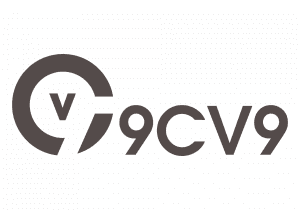














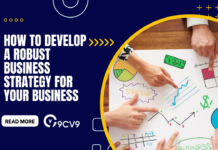
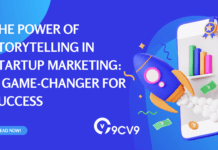





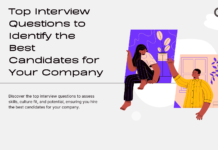
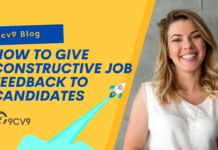

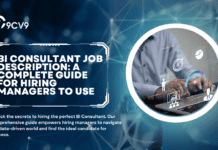





![Writing A Good CV [6 Tips To Improve Your CV] 6 Tips To Improve Your CV](https://blog.9cv9.com/wp-content/uploads/2020/06/2020-06-02-2-100x70.png)


